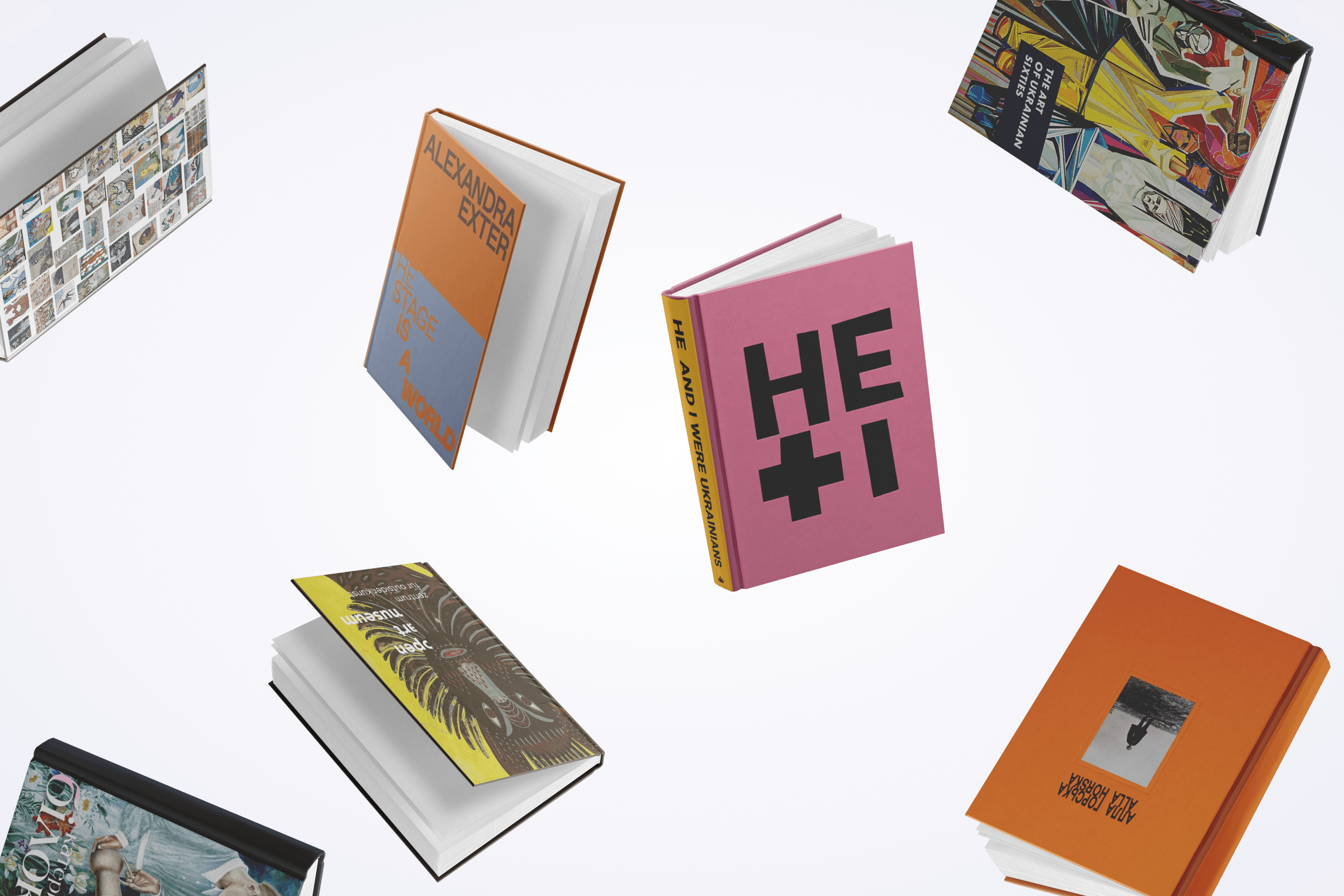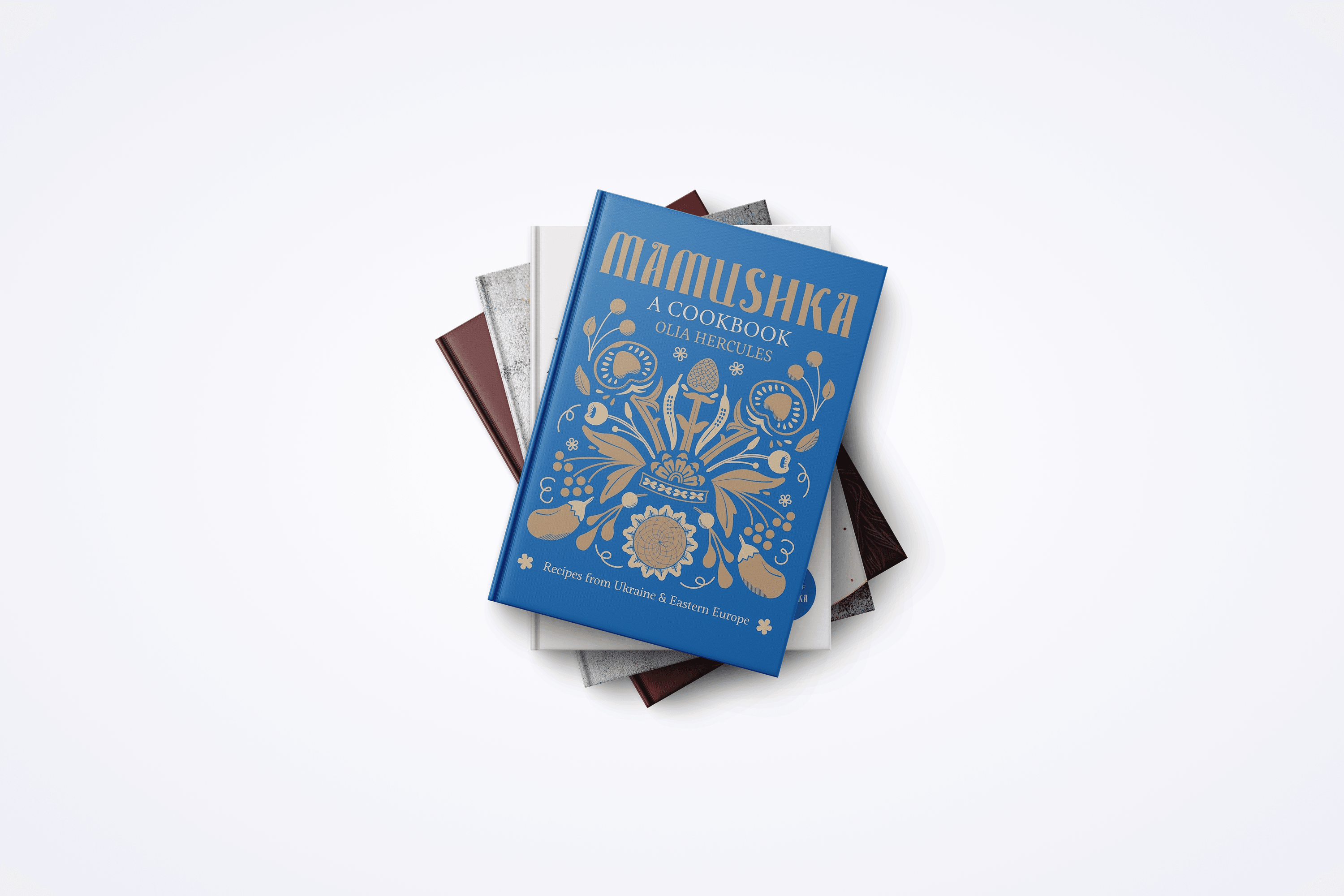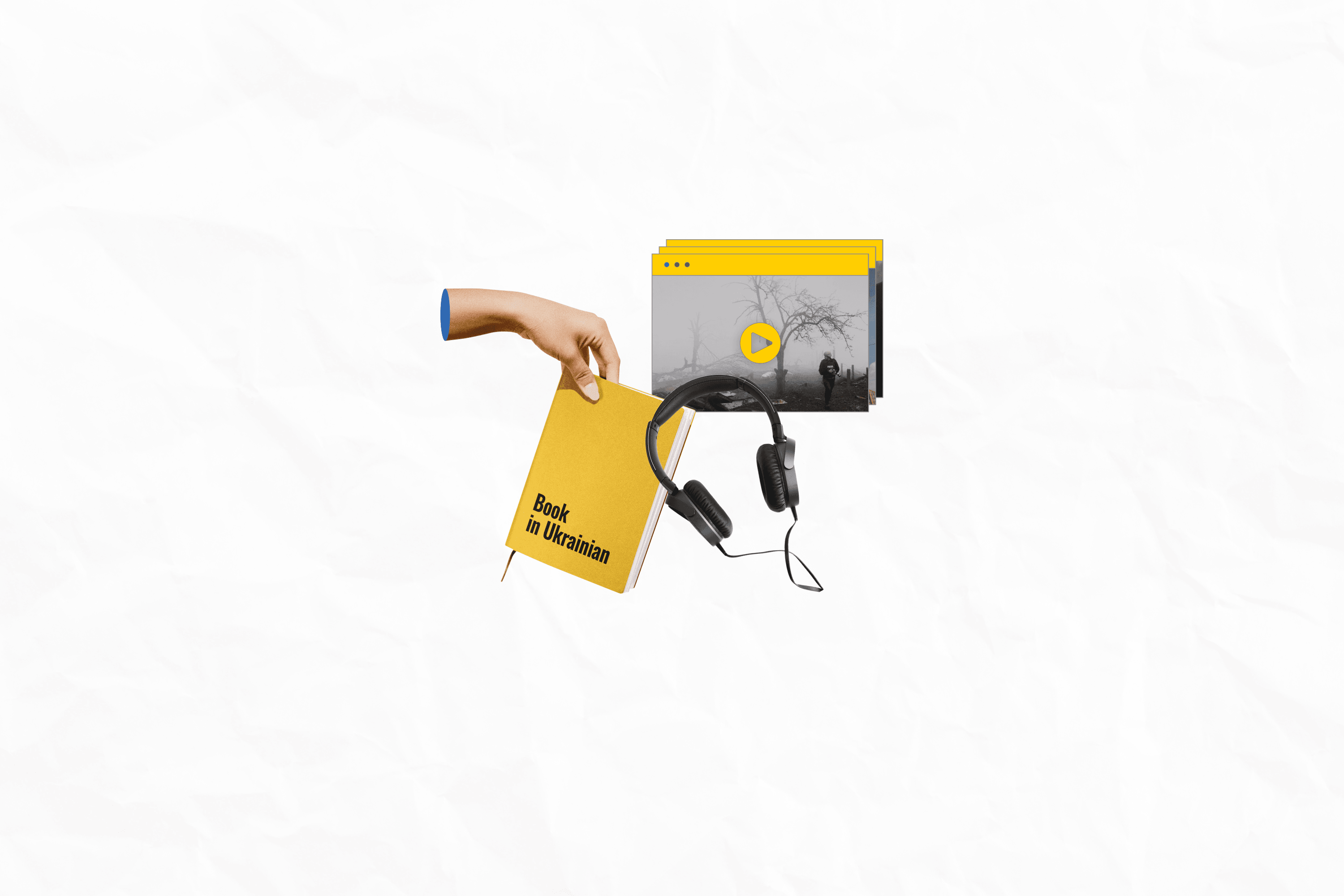After the start of the full-scale invasion, global interest in everything Ukrainian—especially culture and art—grew significantly. Today, more than 160 centers for Ukrainian and Crimean Tatar studies operate across 30 countries, where foreigners study the Ukrainian language and culture.
In recent years, Ukrainian art historians and critics have produced dozens of high-quality gift books that introduce readers to the history and distinct features of Ukrainian art and folk creativity, get acquainted with prominent representatives, and understand the context in which they lived and created.
The Yellow Blue Business Platform has curated a selection of the finest publications about Ukrainian culture in English. These works cover a wide range of topics: from essays and paintings by the avant-garde artist Malevich to a photo album of self-built balconies that Ukrainians illegally installed in the 1990s and 2000s.
1. He and I were Ukrainians
About the book. This is a collection of autobiographical essays by the Ukrainian avant-garde artist and founder of Suprematism, Kazimir Malevich (1879–1935), translated into English. He died of prostate cancer, which developed after three months of torture in a Bolsheviks` prison in 1930. The essays included in the collection were written by Malevich in 1933. In these works, he discusses his own development as an artist and how Ukrainian culture influenced his worldview and ideas about aesthetics. He also reflects on art, the society of his time, and his Ukrainian heritage. This book offers a chance to see Ukraine through the eyes of Malevich, who was captivated by the life and work of Ukrainian peasants. The essays are supplemented with images of the artist’s remarkable works—portraits, landscapes, and geometric compositions.
Why you should read it. The book demonstrates that Malevich considered himself Ukrainian and refutes the claims of Russian propaganda, which attempts to appropriate his heritage. The researchers who compiled the book believe that the reader will not only learn more about Malevich himself but will also better understand the process of Ukrainian art`s development and identity in the 20th century.

2. Alexandra Exter: The Stage is a World
About the book. This is the catalogue for the exhibition of the same name, Alexandra Exter: The Stage Is a World, organized by Peter Doroshenko, director of the Ukrainian Museum in New York. The book, like the exhibition, features about 40 of the artist’s works—including early abstractions and avant-garde theatrical designs.
Alexandra Exter (1882–1949) was a Ukrainian artist of Jewish origin and one of the founders of the Art Deco style. Art critics classify her paintings as belonging to avant-garde movements such as Cubo-Futurism and abstraction. Exter lived in Kyiv for over 35 years and worked alongside Ukrainian avant-garde artists Kazimir Malevich and Volodymyr Tatlin. The artist’s work was also influenced by European modernist movements: she spent the second half of her life in Paris.
Why you should read it. Art historians have largely paid little attention to Exter’s work, despite the fact that she is a key figure in the development of the Ukrainian avant-garde. This book offers an opportunity to explore the artist’s works and, through essays by Ivan Kozlenko, Oksana Semenik, and Claire Staebler, to gain insight into exactly how Exter’s work influenced Ukrainian cinema, theater, and visual art.

3. Teoura Sophie Jablonska
About the book. The publication combines travel prose and photographs taken by the Ukrainian writer and photographer Sofie Jablonska (1907–1971) during her round-the-world journey. She embarked on this voyage in the late 1920s, capturing local landscapes and people along the way. Sofie visited the Indochina Peninsula, Egypt, and New Zealand, the islands of Ceylon (Sri Lanka), Bali, Tahiti, and Bora Bora in the middle of the Pacific Ocean, where the natives affectionately nicknamed her “Teoura,” meaning “red bird.” In 1935, she returned to Ukraine for a few years, and on the eve of the Soviet occupation of Galicia in 1939, she permanently emigrated to Paris.
Why you should read it. Thanks to Jablonska’s photos and descriptions, the reader can witness life in many countries around the world, discover more about the culture of the African and Asian peoples. Readers can also delve into Jablonska’s reflections and observations, seeing the world through her eyes.

4. Alla Horska
About the book. This publication features over a hundred works by the monumental artist and member of the Sixtiers movement, Alla Horska (1929–1970). In 1964, due to her active pro-Ukrainian stance, the party leadership ordered Horska’s expulsion from the Union of Artists and for most of her mosaics and stained-glass windows to be dismantled. Agents of the USSR Committee for State Security arrested many of Horska’s friends, persecuted her for years, and killed her in 1970. Horska was 41 at that time. Her paintings and sketches are preserved in private collections and Ukrainian museums, while her mosaics and stained-glass windows are mostly located in the east of the country, in frontline or occupied cities. In July 2022, in Mariupol, Russian forces destroyed the mosaics Boryviter (Kestrel) and Derevo Zhyttia (Tree of Life), which Horska created in 1967 together with her husband, the artist Viсtor Zaretsky, and other artists.
In addition to images of Horska’s works, the book includes her biography, written by the artist’s granddaughter, Olena Zaretska, as well as essays by Ukrainian art researchers about Horska herself and the historical context in which she lived.
Why you should read it. Alla Horska is a prominent representative of the Ukrainian resistance movement of the 1960s and an artist whose works Russia destroyed both during the Soviet Union and lately, during the full-scale Russian invasion of Ukraine. The book combines images of Horska’s works with quotes and recollections from her contemporaries.

5. The Art of Ukrainian Sixties
About the book. The publication is based on the biographies and analysis of the works of the most outstanding Sixtiers artists from Kyiv, Lviv, Odesa, Uzhhorod, and Kharkiv. The book includes over 400 reproductions of works and archival materials held by the artists' descendants, private collectors, and museums. A team of over 26 experts—art critics, researchers, and collectors—worked on the book for five years. They analyzed not only the artists' works but also the artistic context of the time. The last chapter of the book is dedicated to the literature, academic music, film, and architecture of that era.
Why you should read it. The book provides an understanding of the Sixtiers phenomenon and its place in the history of Ukrainian art. Because the publication was created by a team of authors of different ages and perspectives, the research is comprehensive and versatile.

6. Kateryna Bilokur: An Artist’s Creed
About the book. The most complete collection of works by the brilliant self-taught artist and representative of Ukrainian Naїve Art, Kateryna Bilokur (1900–1961). She painted despite her parents’ prohibitions, as they believed that creative work interfered with farm chores and future marriage. In 1924, Bilokur attempted to drown herself, and only afterward did her family allow her to paint. The artist soon became famous—her paintings began to appear in exhibitions in Ukrainian museums, she joined the Union of Artists of Ukraine, and received prestigious awards and titles. In 1958, eight of Bilokur’s paintings were included in the Soviet art exposition at the International Exhibition in Paris, and two paintings were stolen.
The book collects reproductions of the artist’s works held by private collectors and two Ukrainian museums: in Kyiv and Yahotyn. The collection also includes Bilokur’s letters, in which she describes her life and tells how she became an artist.
Why you should read it. Kateryna Bilokur is one of the most famous Ukrainian artists and an outstanding master of folk decorative painting. She depicted picturesque nature, her loved ones, and vibrant floral ornaments. Bilokur’s paintings are an important part of Ukrainian cultural heritage.

7. The Beast of War. Naїve Art from Ukraine
About the book. A catalogue of the exhibition of Ukrainian Naїve Art at the Swiss open art museum. At the start of Russia’s full-scale invasion of Ukraine, museum staff moved fifty works to St. Gallen, Switzerland, to protect them from wartime damage and Russian looting. The book collects short biographies and works by over twenty self-taught Ukrainian artists, both male and female. Among them are the well-known Maria Prymachenko and Kateryna Bilokur, as well as several masters from northern and central Ukraine who did not sign their works.
Why you should read it. This is a collection of original works that reflect Ukrainian identity and the development of art in various parts of the country. The introduction of the book was written by the museum’s director, Monika Jagfeld. In her essay, she explains the value of Ukrainian Naïve Art and why it is important to preserve it.

8. Nikifor
About the book. The publication combines reproductions of paintings with the life story of Nikifor Drowniak (1895-1968)—an orphan with hearing and speech impairments who became a self-taught artist. In the village of Krynytsia (in what is now Poland), where Nikifor lived his whole life, he was considered eccentric and was often mocked. Art became an outlet and a meaningful pursuit. Nikifor painted self-portraits and panoramas of Krynytsia with its bathhouses and churches. In 1932, the Lviv artist Roman Turyn came to Krynytsia and was deeply impressed by Nikifor’s work. Roman collected and sent about 200 of Drowniak’s drawings to an exhibition in Paris, and this was the decisive step toward his recognition as a prominent representative of Naïve Art.
Why you should read it. The book introduces readers to a little-known, talented, self-taught Ukrainian artist. The authors trace the evolution of Nikifor’s works and recount the turning points in his life and career.

9. XX century Ukrainian porcelain from Korosten
About the book. This album contains photos of the unique collection of porcelain products from the Korosten Factory, which operated from 1908 to 2008. The collection includes painted dinner sets, vases, figurines, and gift sets that were popular throughout Europe.
Employees of the factory and its owner, Serhii Saranov, contributed to the book. They describe how artists created exquisite patterns in the enterprise’s art laboratory and how their designs evolved over the years.
Why you should read it. This book is the history of Ukrainian ceramics and one of the most prominent porcelain factories in Europe. By purchasing it, readers will support Ukrainian children affected by the war: all proceeds from the sale go to charity.

10. Railways in Ukraine
About the book. Photographer Mykola Oleksiienko traveled across Ukraine for years, capturing the railway infrastructure in different regions. His photos are breathtaking, showing the diversity of Ukrainian nature and how railway tracks cross every possible landscape: mountains, forests, and steppes. Oleksiienko also documented Ukraine’s largest industrial centers before they were destroyed by the full-scale war.
Why you should purchase it. Through his photographs, Oleksiienko creates a portrait of Ukraine and highlights the role the railway plays in industry and the lives of ordinary Ukrainians.

11. The Chips: Ukrainian Naїve Mosaics of the 1950-90s
About the book. Photographer Yevgen Nikiforov and art critic Polina Baitsym spent ten years (2013–2023) photographing mosaics by unknown artists in Ukrainian cities. Most of them are already partially ruined due to time and lack of maintenance. In the book, the authors explore the history of Ukrainian monumental art and document through photographs how fragile it is.
Why you should read it. This is an opportunity to see the mosaics created by Ukrainian monumental artists in the 1950s–1990s and how they are gradually being destroyed. For residents of apartment buildings, these works are an everyday backdrop, but for art critics, they are an important part of Ukraine’s cultural heritage that deserves study and preservation.

12. Balcony Chic
About the book. It`s a collection of photos by Ukrainian photographer Oleksandr Burlaka, who captured spontaneous and illegal superstructures on Ukrainian apartment buildings. According to him, every balcony is unique—just like its owners. Some residents made bold decisions, such as building a swimming pool on the balcony. In the book, the author tells how this so-called people`s construction emerged, reflecting both its ugliness and its beauty. He also shares personal stories from his family and friends about the superstructures.
Why you should read it. The book’s author considers self-built balconies a defining feature of the post-Soviet city, illustrating one chapter of Ukrainian history. This collection is a fascinating visual study of the architecture and urban space of independent Ukraine.

13. Embroidery of Eastern Podillia
About the book. The couple, Yevhen and Tetiana Prychepiy, traveled through Ukrainian villages for five years and gathered a collection of embroidery from Podilla—a historical region in the сentral-western part of the country. In the book, Yevhen analyzes the symbolism of the ornaments and their structure, highlighting the characteristic features of Podillian embroidery. The publication contains many detailed illustrations of Podillian fabrics from the first half and the middle of the 20th century.
Why you should read it. This is an in-depth study of Ukrainian embroidered items in Podillia. The detailed illustrations will appeal to ethnographers, designers, artists, and everyone who loves decorative arts.

14. Ukrainian Folk Fashion
About the book. Photographer Anna Senik immerses readers in the world of traditional Ukrainian clothing. She showcases clothes, embroidery, and jewelry from nine regions of Ukraine. The book also includes texts by ethnographer Yurii Melnychuk, who explores the history of each region and the distinctive features of its traditional clothing, embroidery, and jewelry.
Why you should read it. Senik’s photographs resemble frames from a historical film. All the looks have documentary accuracy—to achieve it, the photographer consults with ethnographers, collectors, and museum professionals. Thanks to the combination of Senik’s photographs and Melnychuk’s texts, the book serves as a comprehensive historical reference guide to Ukrainian clothing.

15. Contemporary Ukrainian Crafts
About the book. A story about original crafts and unique traditions that originated in Ukrainian lands hundreds of years ago. The book features eight chapters in which art critics explore ceramics, carpet weaving, home textiles, vytynanka (paper cutouts), wood carving, candle making, handmade furniture, and glassblowing. In addition to the history of Ukrainian handicrafts, the researchers explain how crafts are evolving in Ukraine today.
Why you should read it. This is a captivating book about the history of Ukrainian applied art and the work of its contemporary practitioners. The authors supplement the analytical texts with photographs of Ukrainian products.

16. Ukraine Rising. Contemporary Creative Culture from Ukraine
About the book. Lucia Bondar, the head of Creative Publishing, Lucia Bondar, conducted a study of contemporary Ukrainian culture. In the book, she talks about artists working in various fields—graphic design, architecture, painting, photography, music, fashion, and even gastronomy. Each of the featured individuals blends traditional aesthetics with modern trends in their work.
Why you should read it. Through photos and essays about the artists, the book captures the creative spirit of modern Ukraine and reveals what lies at its core.




